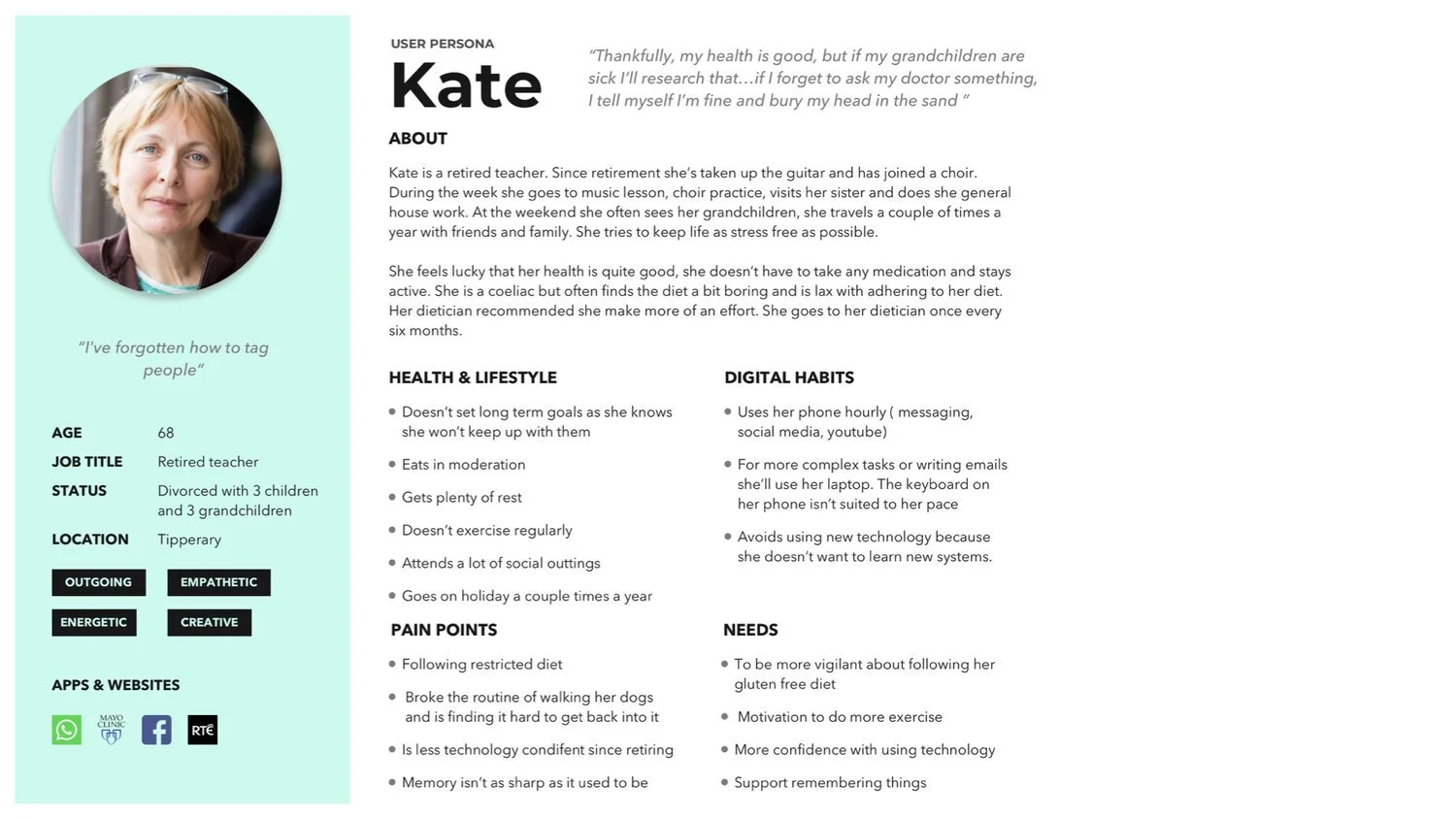A Healthcare App for people over 65
Digital Design Guidelines For People Over 65: A mixed-methods study of their impact on autonomy and usefulness in a Healthcare App.
I completed my MSc in 2020, my thesis focused on how technology can support the healthcare journey for people over 65.
Overview
Many advances in health technology have emerged to improve efficiency, reduce costs and improve patient health outcomes. As the population of adults over 65 continues to grow, the demand on healthcare systems and providers increases. The Coronavirus pandemic of 2019/2020 saw a sudden and extreme demand put on healthcare systems across the world. This increased pressure illustrated cracks in the public health infrastructure.
Technology In An Ageing Population
Smartphone adoption among seniors doubled from 2013 to 2017
A 2017 Pew Research study found a third of people over 65 said they were only a little or not at all confident in their ability to use electronic devices and to navigate the web
Declining vision, memory and dexterity impact users belief in their ability to use technology
Process
I applied a user centred design process throughout this project. The below image illustrates the steps taken during the project.
Discovery
I began the project with a discovery phase. The discovery phase involved preliminary user research and competitor analysis. This early stage research helped to gain an understanding of user needs, the market landscape and define the scope and requirements of this project.
I used personas, scenarios and user journey maps to capture my findings.
Design
I used user research to inform the concept.
Sketches
I used user research to inform the user flows and initial sketches. Low-fidelity prototypes were sketched to reflect the concept as it developed. These were used to define the user journey and identify components that would be required for the prototype.
Wireframes
I used wireframes to map out and refine the user journey. These wireframes were used to gain initial feedback on the flow and interaction of the prototype. Guerrilla usability testing is a fast and quick way to receive feedback on designs. Feedback from wireframe guerrilla testing was implemented on the high fidelity prototypes.
Design considerations for over 65s
AAA accessibility to support declining vision.
Large touch targets to offset declining dexterity
Plain English for easier information processing
Small feature set to avoid extra cognitive load
Final designs
I created three prototypes for this project.
Tabbed navigation without illustrations
Tabbed navigation with illustrations
Hamburger and breadcrumb navigation without illustrations
Then assessed users perceived sense of autonomy and usefulness when using each interface.




